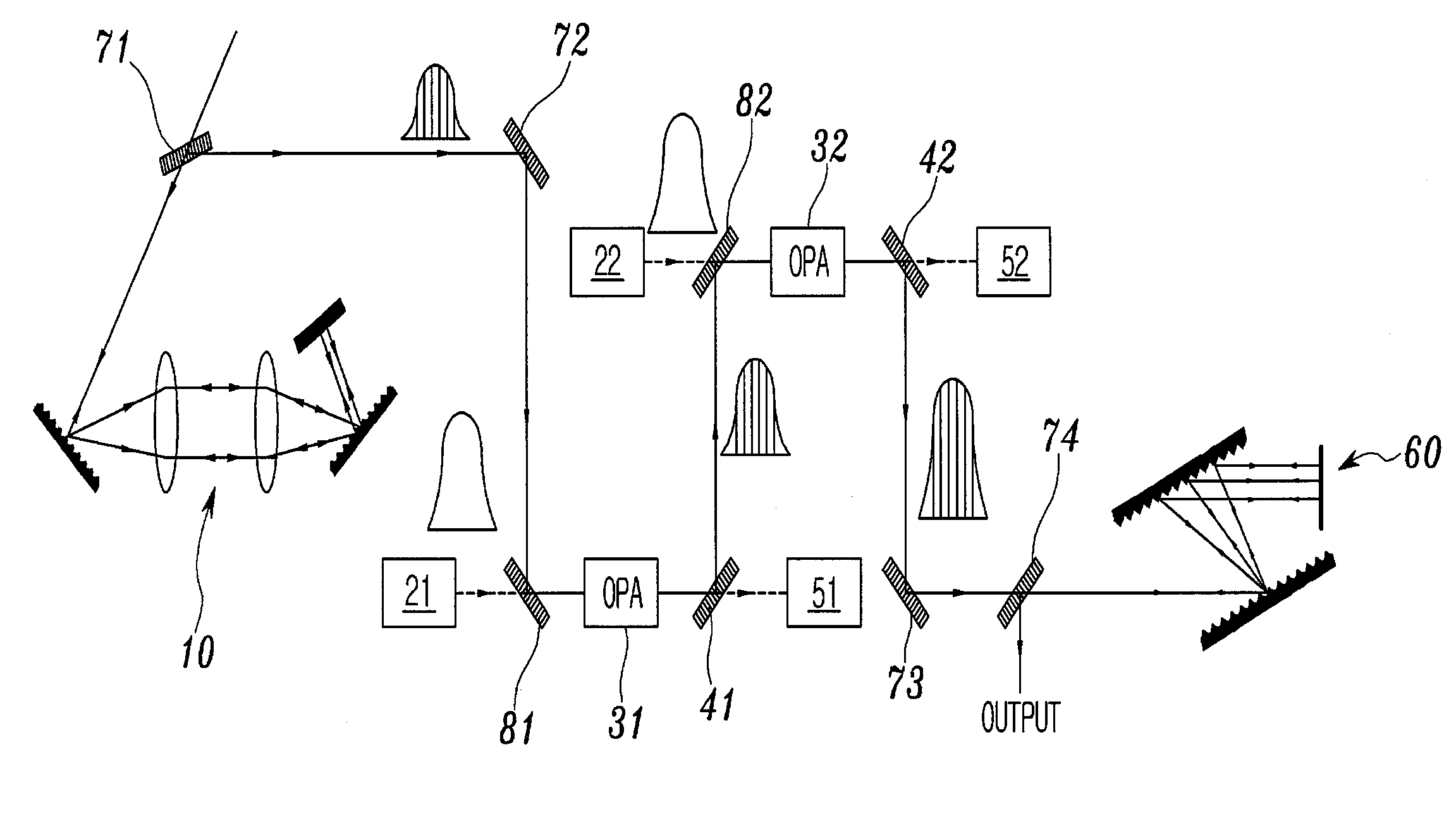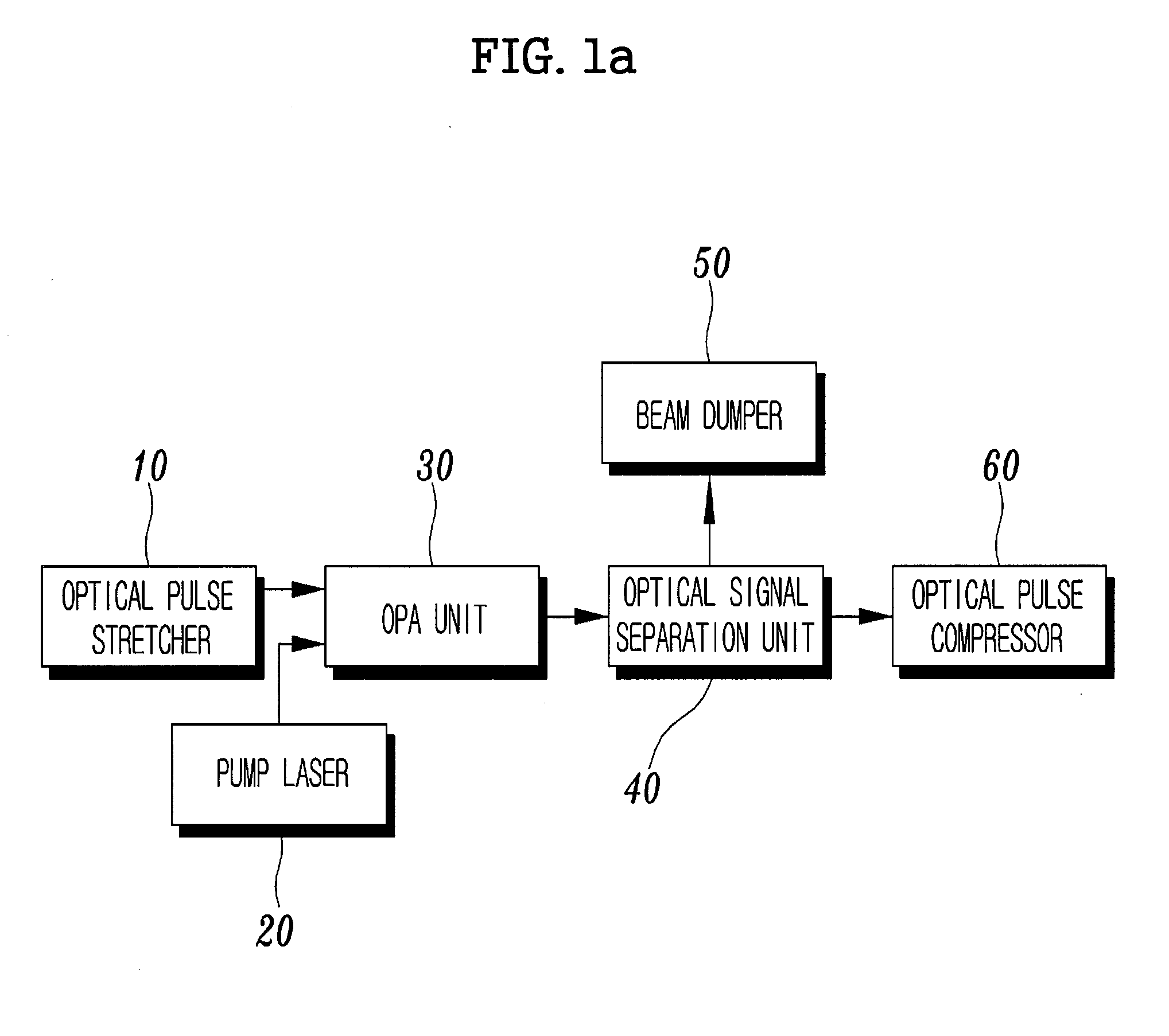Apparatus for spectrum-doubled optical parametric chirped pulse amplification (OPCPA) using third-order dispersion chirping
a technology of optical parametric chirped pulses and apparatuses, applied in optics, instruments, electromagnetic transmission, etc., can solve the problems of difficult to utilize both amplified signals and idlers in the conventional opcpa apparatus, and perform simultaneous compensation in the optical pulse compressor
- Summary
- Abstract
- Description
- Claims
- Application Information
AI Technical Summary
Benefits of technology
Problems solved by technology
Method used
Image
Examples
Embodiment Construction
[0110]Hereinafter, embodiments of the present invention will be described in detail with reference to the attached drawings.
[0111]FIG. 5 is a detailed diagram showing the construction of an Optical Parametric Chirped Pulse Amplification (OPCPA) apparatus according to the present invention.
[0112]Referring to FIG. 5, the OPCPA apparatus of the present invention includes an optical pulse stretcher 100, a pump laser 200, an Optical Parametric Amplification (OPA) unit 300, an optical signal separation unit 400, a beam dumper unit (beam dumper) 500, and an optical pulse compressor 600.
[0113]The optical pulse stretcher 100 is a device for temporally stretching laser light by varying the optical path thereof for each frequency, but applies short-wavelength (or long-wavelength) preceding-type chirping (refer to FIG. 9). That is, the optical pulse stretcher 100 temporally stretches the length of the pulse (pulse duration) of the output light of an ultrashort laser from an original band of sev...
PUM
 Login to View More
Login to View More Abstract
Description
Claims
Application Information
 Login to View More
Login to View More - R&D
- Intellectual Property
- Life Sciences
- Materials
- Tech Scout
- Unparalleled Data Quality
- Higher Quality Content
- 60% Fewer Hallucinations
Browse by: Latest US Patents, China's latest patents, Technical Efficacy Thesaurus, Application Domain, Technology Topic, Popular Technical Reports.
© 2025 PatSnap. All rights reserved.Legal|Privacy policy|Modern Slavery Act Transparency Statement|Sitemap|About US| Contact US: help@patsnap.com



